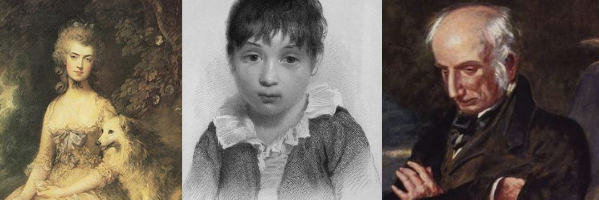Week 4: The Hyperconnected Story

Heroic Twitter
In 1981, William Gibson published a short story in which a man (the titular "Johnny Mnemonic") stores and transports data in his head. With the help of a cybernetically-enhanced woman and a cyborg dolphin, he takes on the Yakuza and starts to retrieve his own lost memories. Thirty-one years later, a similar story makes it into The New Yorker, one of the most prominent publishers of short fiction. It is so distinct a story for this context that the magazine goes online and publishes it first serially via Twitter.
Jennifer Egan's "Black Box" was a close follow-up to her 2010 novel A Visit from the Goon Squad, which had won the Pulitzer Prize in 2011. The novel itself is something of an exploration of social networks, jumping around in time to explore moments in the lives of an intersecting cast of characters. The rock and roll focus of early cyberpunk writers such as Pat Cadigan returns, but in more traditional literary packaging, advertised as inspired by Marcel Proust rather than Philip K. Dick. With "Black Box," we jump into the near future to hear the story of a cybernetically-enhanced spy, part of a group known as "beauties" whose primary role is to be physically near foreign men deemed potentially dangerous by the United States government. Within the story's publishing context, the cyberpunk vision had manifested in our lives through the growing popularity of mobile smart devices, advanced social networks, and an expanding post-Patriot Act surveillance state, and this is the story of that moment where The New Yorker's educated urban audience was freshly ready for this sort of story.
The work as initially distributed through Twitter is itself hyperconnected, thrown out in pieces to be liked or retweeted on their own, each post uniquely subject to algorithms of visibility. At the time, a not insignificant number of readers likely encountered the story in one or a few scattered pieces. The parts were not threaded together, as is possible and common now, and were capped at 140 characters, not the current 280. Without understanding the literary context, a machine decided which parts to promote and to which audiences. The story itself, however, runs counter to this, with a clear linear sequence written to be read in its entirety. It was subsequently published, online and in the print magazine, as a continuous whole, organized into 47 numbered sections.

The story starts out as instructional, its central conceit being that the narrator has an internal recording device in which she can occasionally record a small thought to be preserved as field notes which future beauties can review in training. Like I discussed last week in saying that cyberpunk critiques the way in which "advances in technology would merely provide a shiny facade over growing problems," here we see advances in spying technology and warfare premised on the literal objectification of women as human microphones given a "designated mate" and textual instructions which appear at times in the style of mid-20th century behavioral guides for good wives. That last part is the job: be a good partner so that the men will have low expectations of you and not realize you are a human microphone standing nearby during phone calls: "The failure of your new host to acknowledge you may indicate that women do not register in his field of vision. Being invisible means that you won’t be closely watched."
The goal of invisibility, of accepting one's devices are just pleasant company, is also true for other surveillance technology. As I introduced in Week 1, one of the challenges of literature in the age of hyperconnectivity is that people communicating with machines and machines communicating with machines runs counter to our models of character-driven narratives. Egan's critique serves as a critique of objectification of women, but utilizing cybernetics in narrative allows some exploration of machine communication with an otherwise human character. Egan's real-world commentary comes most strikingly through references to what her narrator calls "the new heroism":
In the new heroism, the goal is to transcend individual life, with its petty pains and loves, in favor of the dazzling collective.
... In the new heroism, the goal is to merge with something larger than yourself.
In the new heroism, the goal is to throw off generations of self-involvement.
In the new heroism, the goal is to renounce the American fixation with being seen and recognized.
In the new heroism, the goal is to dig beneath your shiny persona.
... Childish attention-seeking is usually satisfied at the expense of real power.
An enemy of the state could not have connived a better way to declaw and distract us.
Now our notorious narcissism is our camouflage.
The narrator – tracked only as a dot on a big screen of other dots, seen only by a small audience of government officials – by design is not the recipient of individual credit. She is risking her life, but her sacrifice is to remain largely unknown. The tweets as her mental dispatches are not meant to be "attention-seeking." They are only occasionally personal, as the narrator's feelings slip out seemingly unintentionally, but by design they are meant to be concisely descriptive and instructional. This is in direct opposition to the surrounding context in which these tweets were distributed, which was a microblogging platform designed to facilitate quick, thoughtless releases of personal information in exchange for potential gains in the attention economy. As the second-to-last line quoted above suggests, within the world of the story, real Twitter appears as something an enemy government would have unleashed upon American society to destroy it.
The story functions as a great formal experiment. The mental dispatches function like Twitter, but they are not. They are set-up as opposed, a vision of what Twitter could be alternatively, but not necessarily in a good way. If you have read this before or go read it now, I always enjoy discussions of how the "new heroism" as critique of Twitter also functions within the text's seeming critiques of post-9/11 acceptance of endless war and growing surveillance being propagandized as the patriotic position. Also, as I discussed last week, this all precedes information such as Snowden's leaks and the theory of "surveillance capitalism," both of which would have likely complicated the text.
Moving forward several years, we then turn to two other stories of hyperconnectivity in The New Yorker:
- "The Polish Rider" – Ben Lerner (2016)
- "Now More Than Ever" – Zadie Smith (2018)
Historical Uber
Many core topics of Ben Lerner's "The Polish Rider" are not strictly new:
- Ekphrastic writing that replaces lost or unfinished visual art inherently professes some level of superiority.
- Sometimes when we think we are being nostalgic for an earlier time, we are actually being nostalgic for an earlier moment in media, as the narrator finds himself doing in thinking back to the 1978-1982 TV series Taxi.
- Involving police or other use of force in securing art which is otherwise meant to project a level of sociality deprives the art of that sense.
Each of these could have emerged in that late 70's context to which the narrator looks back. The hyperconnectivity comes through the central role of Uber, with particular interest in the gig economy supported through this.
An artist named Sonia loses paintings in an Uber, and the driver (who is rushed through a system of incentives) misunderstands Sonia's call and takes her sense of urgency to mean he should get to his next location even faster. By the time Sonia gets the driver back to her, the paintings are gone. The driver is not allowed to divulge information on the other passenger, and an imposed seeming lack of hierarchy within Uber makes it difficult to appeal to a higher authority to pass a message on to the other passenger. Officially, police cannot help, but one Uber-hating officer offers to put pressure on the (immigrant) driver. Sonia and the narrator agree this would be too far, and yet Sonia does ultimately use an emotional appeal via text messaging to get the driver to violate his contract and provide an address. These hurdles are points of conflicts – standing between the main character and her goal – but ultimately serve not just to draw out the search, but to visualize the various systems through which Sonia's paintings move.

The paintings themselves were very thoroughly about historical context. A photograph of Leonid Brezhnev and Erich Honecker in a socialist fraternal kiss was recreated in a captioned mural on the eastern side of the Berlin Wall: "Го́споди! Помоги́ мне вы́жить среди́ э́той сме́ртной любви́" (My God, Help Me to Survive This Deadly Love). In 2009, the artist, Dmitri Vrubel, restored the public mural to make it more visibly clean and durable. Sonia, seeing this as "de-historicizing, spectacularizing, cheapening," paints a series of copies of her own, depicting the image in various historical styles as Cubism or in the styles of specific painters such as Caravaggio or Gerhard Richter. The narrator compares this to "iPhone photographic effects and filters" in giving "a post-historical touch."
Lerner's story is, similarly, deeply invested in its historical context. Accordingly, "The Polish Rider" makes the case for how artistic meaning is shaped by things such as digital networks, automated sorting (and biases), surveillance, and the ease with which one can continue remote communication with a vulnerable employee into evening hours. For our purposes, the story has some shortcomings through its overall style as an art essay, allowing some of this to come out more in theoretical terms than in practice, but we do see some of this play out.
Twitter of Cruelty
Within the terms of this course, I was almost immediately sold on Zadie Smith's "Now More Than Ever." After a brief opening paragraph in which the narrator introduces the fashions of wanting to be seen and to be seen to be good, and dismissing her friend Mary as fundamentally (by her very name) being out of fashion, Smith writes:
Mary left. Scout came by—a great improvement. Scout is so involved and active. She is on all platforms, and rarely becomes aware of anything much later than, say, the three-hundredth person. By way of comparison, the earliest I’ve ever been aware of anything was that time I was the ten-million-two-hundred-and-sixth person to see that thing. There’s evidently a considerable gulf between Scout and me. But that’s why I am always so appreciative of her coming by and giving me news.
This temporal dimension is influential in real life, but hard to depict. Smith here only refers to it happening broadly. You do not see the feed; instead, we see someone who is what is sometimes called "very online" in contrast with a narrator who is not. As Smith imagines it, this deep immersion in online time produces two competing results:
- Each minor action or expression becomes a distinct event to be immediately reacted to, and this reaction needs to be outwardly broadcast. If you become aware of anything and do not broadcast it, and then someone else broadcasts it instead, you will not be seen as one of the earliest people aware of this thing, and so lose status.
- A perspective in which "the past is now also the present" and so you must understand everything in your past "in the exact manner in which you understand things presently." It is not sufficient to be good now or to be seen as adaptable to emerging values; rather, you need to present an image of yourself that was always in keeping with those present values.
When Scout and the narrator watch a classic film together, the narrator reacts wrongly. She feels sympathy for the protagonist, who likely killed a woman. Though the film is designed to produce this immediate response, it falls outside of the current range of acceptability, and in the time of a short walk from the movie theater to home, Scout has already directed judgement at the narrator through online networks. I discussion this "cancel culture" element of the story at more length in "On Suspension Considered as one of the Fine Arts," but for our broader consideration, what is relevant is Smith's general narrative strategies.
Similar to what we have seen elsewhere, Smith reworks the online components into real-world interpersonal dynamics. In the passage above, we encounter Mary and Scout not abstractly within vast social networks but as a sequence of guests actually in the narrator's apartment. More striking is an allegorical use of arrows. The dynamics of social media platforms such as Twitter is that people tend to be either implicitly or explicitly speaking in opposition to someone each day. This is perhaps heightened within professional worlds such as academia where these people's lives already involved arguing opposing ideas. What once manifested as long-form researched writing (conference talks, essays, books) on the scale of years now takes the form of hourly skirmishes. Smith depicts this by having a large group of professors all live in the same apartment building and engage in a ritual of pointing arrows out their windows toward those who are the enemy of the day. With a regular pattern of arrows being pointed at Professor Eastman, the narrator wonders how it is he could continue to have a job.
The narrator – herself a professor with a well-informed understanding of art – makes a series of involved judgements which would likely play out well on the scale of a book, but play out horribly on the scale of immediate reaction to a brief comment. She gets "cancelled," but Smith tends more frequently to the idea of ending up "beyond the pale." Either way, the important idea is that as fast as those judgements get made, they only go one way. You are not constantly being judged for your ability to come back into the fold. There is only a line you continually risk crossing, and once you do, you are in this exiled space. Life in this sort of exile is not so bad in Smith's view, but this is how she depicts this hyperconnected world. This is a vision that plays well as a short story, but would struggle on the scale of a novel. In contrast to something like the "Nosedive" episode of Black Mirror, Smith does not imagine it as a continuing spiral, and so there are only so many acts the story can have. The online world is a blur you barely experience in a perceptible way, until it comes at you all at once, and then you are completely outside it, and get to wander the streets as something of a raving madman.
A fast-paced technological world can translate well into a fast read. We continue next week with more short works: three books of lyric poems. That shift in genre will present new challenges for us to consider.
This is part of a 10-week course of study on literature in the age of hyperconnectivity. To get updates like this each Friday, as well as my monthly newsletter and invitations to live discussions with authors, subscribe below:





